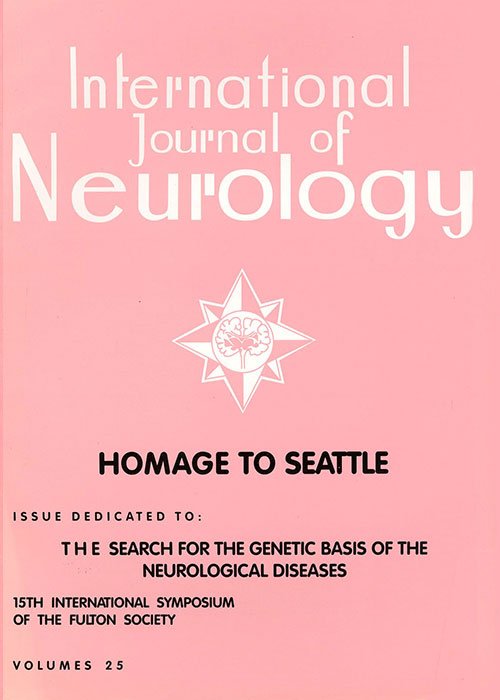Full Issue
DOI:
https://doi.org/10.62486/ijn199145Abstract
The combined issue (Numbers 1–2–3–4) of Volume 25 of the International Journal of Neurology (1991) was dedicated to The Search for the Genetic Basis of Neurological Diseases, representing a pivotal moment in the journal’s transition toward the molecular era of neuroscience. Edited by Dr. Prof. Víctor Soriano, the volume reflected the rapid expansion of neurogenetics at the dawn of the 1990s—when molecular biology began to elucidate the hereditary mechanisms underlying major neurological disorders.
The issue opened with Soriano’s editorial, “The Impact of Genetic Studies in Neurological Diseases,” which emphasized how advances in DNA technology, linkage mapping, and molecular diagnostics were transforming neurology from a descriptive to a mechanistic science. He underscored the promise of identifying mutations responsible for complex diseases such as epilepsy, dystonia, and Alzheimer’s, while noting the emerging ethical and clinical challenges of genetic testing.
Roger N. Rosenberg authored the leading paper, “The Molecular Genetics of Neurological Disease,” providing a comprehensive overview of gene localization, mutation analysis, and recombinant DNA techniques applied to the study of inherited neuropathologies. His article set the intellectual framework for the entire issue.
Michael S. Aldrich examined “The Neurobiology of Narcolepsy–Cataplexy Syndrome,” proposing that the disorder’s hereditary component might be linked to hypothalamic dysfunction and genetic regulation of REM sleep mechanisms—a hypothesis later confirmed by discoveries of hypocretin/orexin gene mutations.
In “Genetics of Alzheimer’s Disease,” James R. Burke and Allen D. Roses discussed the identification of APP, APOE, and presenilin gene mutations, which revolutionized the understanding of dementia pathogenesis and risk inheritance.
Mark Gardiner and Sara E. Mole contributed one of the first molecular genetic analyses of neuronal ceroid lipofuscinosis, detailing the biochemical and lysosomal gene defects that characterize this group of progressive neurodegenerative disorders.
T. Siddique and colleagues presented “A Molecular Genetic Approach to Amyotrophic Lateral Sclerosis (ALS),” reporting progress in the identification of chromosomal loci and candidate genes associated with familial ALS—research that would soon culminate in the discovery of SOD1 mutations.
Stanley Fahn addressed “The Genetics of Idiopathic Torsion Dystonia,” summarizing familial patterns, penetrance variability, and molecular markers in this movement disorder, while Moyra Smith discussed the mapping of the tuberous sclerosis genes (TSC1 and TSC2), integrating cytogenetic and molecular linkage studies that clarified its autosomal dominant inheritance.
Finally, Robert H. Brown Jr. detailed the molecular basis for hyperkalemic periodic paralysis, identifying sodium channel mutations (SCN4A) as the key mechanism linking ion channel dysfunction to muscle excitability disorders—a foundational step in the emerging field of channelopathies.
This 1991 volume captured the genomic turn in neurology, marking a decisive shift from neuropathological description to molecular causation. It remains a historic issue of IJN, emblematic of the era when neuroscience entered the age of molecular genetics, laying the groundwork for diagnostic genomics and precision medicine.
Downloads
Published
Issue
Section
License
Copyright (c) 1991 International Journal of Neurology (Author)

This work is licensed under a Creative Commons Attribution 4.0 International License.
The article is distributed under the Creative Commons Attribution 4.0 License. Unless otherwise stated, associated published material is distributed under the same licence.







